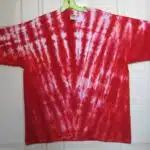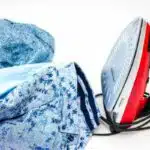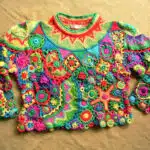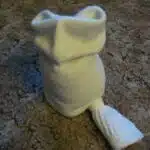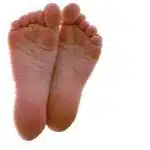In today’s fast-paced world, time is of the essence. We all want to look our best while running to work, juggling household chores and family responsibilities. One aspect of looking prim and proper is making sure our clothes are presentable and wrinkle-free. Long-sleeved shirts are a staple in many wardrobes, but folding them correctly can be an arduous task for some. In this article, we will explore four different ways to fold a long-sleeved shirt that will save you time and effort while ensuring your outfit looks sharp.
Efficiently folding your long-sleeved shirts can save you precious minutes each day that could be better spent on other important tasks. Whether you’re packing for a business trip or organizing your wardrobe at home, knowing how to fold your clothes correctly can make all the difference in how they look when worn. In this guide, we will break down four easy-to-follow techniques for folding long-sleeved shirts – from traditional methods to more advanced techniques – so you can choose the one that works best for you. With these tips, you’ll never have to worry about wrinkled sleeves again!
Why Proper Folding Matters
We all have our reasons for folding clothes. Some do it to save space, others to maintain the quality of their fabrics. Regardless of the reason, it’s crucial to understand that proper folding matters. It’s more than just a chore; it’s an art form that can make a difference in your wardrobe and lifestyle.
The importance of proper folding cannot be overstated. It helps keep your clothes organized and easily accessible, saving you time when you’re running late for work or getting dressed for a night out. Proper folding also protects your garments from wear and tear, prolonging their lifespan. When clothes are left unfolded, they tend to wrinkle and crease, leading to unsightly lines that can be difficult to remove.
There are other benefits to proper folding besides organization and garment preservation. It can also help reduce stress levels and promote a sense of calmness in your life. Studies show that cleaning and organizing your living space can have positive effects on mental health, reducing anxiety and depression symptoms. By taking the time to fold your clothes properly, you’re not only improving the condition of your wardrobe but also contributing to your overall well-being. Now that we’ve discussed why proper folding matters let’s move on to preparing your shirt for this process.
Preparing Your Shirt For Folding
Shirt preparation is crucial before folding your long-sleeve shirt. It involves checking the fabric care instructions, ensuring that there are no wrinkles or stains, and buttoning up any buttons. Doing this ensures that your shirt looks neat and tidy after folding.
Firstly, check the label on the shirt for specific instructions on how to care for it. Some shirts may require hand-washing or gentle machine-washing, while others may be suitable for a regular cycle in the washing machine. Following the manufacturer’s instructions will help prevent any damage to the fabric and ensure that your shirt lasts longer.
Secondly, make sure that your shirt is free of wrinkles and stains before folding it. Remove any creases by ironing or steaming the garment if necessary. Also, check for any stains and treat them appropriately before folding to avoid setting them deeper into the fabric.
Lastly, button up any buttons on your shirt to avoid misshaping during the folding process. Leaving buttons undone can cause the fabric to wrinkle unevenly, making it difficult to fold neatly. By following these simple steps in preparing your long-sleeve shirt for folding, you can achieve a perfectly folded garment every time.
- Check the label for fabric care instructions.
- Ensure there are no wrinkles or stains on the shirt.
- Button up all buttons before beginning to fold.
Now that you have prepared your long-sleeve shirt for folding let’s move onto learning about “the basic fold.”
The Basic Fold
Like a painter preparing their canvas before creating a masterpiece, folding a shirt is an art form that requires preparation and technique. In the previous section, we discussed how to prepare your shirt for folding. Now, let’s dive into the benefits of mastering the basic fold.
The basic fold is the foundation of shirt-folding techniques. It creates a neat and compact shape that can fit easily into drawers or luggage. By mastering this technique, you’ll save time and space while keeping your clothes organized. Plus, it’s an essential skill for anyone who wants to look sharp without spending a lot of money on dry cleaning or professional folding services.
To master the basic fold, there are a few tips to keep in mind. First, always start with a clean and dry shirt to avoid wrinkles or stains. Second, lay it flat on a surface with the collar facing up and smooth out any creases or bumps. Third, follow each step carefully and use your hands to smooth out any folds as you go along. With practice, you’ll be able to fold shirts quickly and efficiently without sacrificing quality.
Next up: the military roll. This advanced technique is perfect for packing shirts in suitcases or backpacks without taking up too much space. Stay tuned to learn how to do it like a pro!
The Military Roll
The Military Roll is a popular method of folding clothes that has been used by military personnel for years. It is an efficient way to fold long-sleeved shirts that maximizes space and minimizes wrinkles. The process involves folding the sleeves inward, then rolling the shirt from the bottom up.
One benefit of the Military Roll is that it allows for easy packing when traveling. The rolled-up shirt can be placed in a suitcase or backpack without taking up too much space. Additionally, this method prevents wrinkles, making it ideal for people who are always on-the-go.
If you’re not a fan of the Military Roll, there are other alternatives available. For example, you can try the KonMari Method, which involves folding clothes into small rectangles and storing them vertically in drawers. This method also reduces clutter and helps keep your clothes organized.
When it comes to folding long-sleeved shirts, there are many options available. However, the Military Roll offers several benefits that make it a popular choice among travelers and those who want to save space in their closets. If you’re looking for an alternative to this method, consider trying the KonMari Method for a different approach to clothing organization.
The Konmari Method
Did you know that the average American household has over 300,000 items? That’s a lot of clutter! The KonMari Method, developed by Japanese organizing consultant Marie Kondo, emphasizes the importance of decluttering and only keeping items that spark joy. One key aspect of this method is the KonMari folding technique, which not only saves space but also allows for easier organization and selection of clothing.
The KonMari folding technique involves folding clothes into small rectangles, allowing them to stand upright and be easily visible in drawers. This method not only saves space but also reduces wrinkles and damage to clothing over time. By using this technique, individuals are able to see all their clothing options at once, making it easier to choose what to wear each day.
In addition to physical benefits such as saving space and reducing wrinkles, decluttering through the KonMari Method can also have mental benefits. A cluttered environment can lead to feelings of stress and anxiety, while a tidy space can promote relaxation and peace of mind. By decluttering and using the KonMari folding technique, individuals are able to create a more peaceful living space that promotes well-being.
With the KonMari Method and its folding techniques in place, it’s time to take things up a notch with the flip and fold method. This technique involves flipping clothes inside out before folding them in order to prevent dust buildup on clothing that isn’t worn often. Not only does this help keep clothes cleaner for longer periods of time but it also ensures they are ready-to-wear whenever necessary.
The Flip And Fold
The Flip and Fold technique is a quick and easy way to fold your long-sleeve shirt that will save you time and keep your closet organized. The benefits of this method include the ability to stack multiple shirts on top of each other without creating wrinkles or creases. Also, when you need to pick out a shirt, it’s effortless to see which one you want without having to unfold them all.
To perform the Flip and Fold, start by laying the shirt flat on a surface with the sleeves extended away from your body, then fold one side of the shirt across the middle, followed by the other side. Next, take the bottom of the shirt and fold it up towards the collar. Finally, flip over the top half of the shirt so that it now rests on top of the folded bottom half. With this technique, you can store your long-sleeve shirts in a neat pile or on hangers in your closet.
Variations of the Flip and Fold include folding your shirts into smaller squares for packing purposes or rolling them up tightly for travel. Another variation is folding just one sleeve across the middle before folding in half, leaving one sleeve visible for easy identification. Regardless of how you use this method, it’s an excellent tool for keeping your shirts organized and wrinkle-free.
Transition: Now that you’ve mastered The Flip and Fold technique let’s move on to another trick that will help keep your long-sleeve shirts looking sharp – The Sleeve Tuck.
The Sleeve Tuck
The Sleeve Tuck is a technique used when folding long-sleeved shirts. It involves tucking the sleeves into the shirt, which not only makes it easier to fold but also keeps the sleeves in place. This technique is especially useful for those who travel frequently and need to pack their clothes efficiently.
Benefits of using The Sleeve Tuck include saving time and space. By tucking the sleeves into the shirt, it eliminates the need to adjust them multiple times while folding, ultimately reducing the overall time spent folding. Additionally, this technique allows for a more compact fold, freeing up valuable space in your luggage or closet.
Alternatives to The Sleeve Tuck include rolling or hanging your long-sleeved shirts. Rolling can be a great option for those who want to reduce wrinkles and save space, while hanging is ideal for those who want to keep their clothes neatly organized without worrying about creases. However, if you’re looking for a quick and efficient way to fold your long-sleeved shirts, The Sleeve Tuck may be your best bet.
Transitioning into the subsequent section about ‘folding with a board’, one might consider trying this technique as an alternative to The Sleeve Tuck. While The Sleeve Tuck is effective in its own right, some individuals may prefer using a folding board as it provides a more uniform fold and can be particularly useful when packing dress shirts or other items that require precision folds.
Folding With A Board
- An effective and efficient way to fold long-sleeve shirts is to use a folding board.
- Creating a folding board is simple, just using a piece of sturdy cardboard and some tape.
- To begin folding with a board, place the shirt onto the board, making sure to align the collar and shoulders with the edges of the board.
- To fold the shirt, fold the sleeves inwards and the bottom of the shirt up to the shoulders.
- Flip the shirt over and fold the sides of the shirt inwards, then fold the bottom up to the shoulders.
- Finally, fold the top of the shirt down to the bottom and the board has created the perfect, wrinkle-free fold.
Creating A Board
As you stand in front of your closet, sorting through piles of long-sleeve shirts, do you ever feel overwhelmed by the mess? Do you wish there was an easier way to keep your clothes organized and tidy? If so, creating a DIY board for folding with creative techniques might be just what you need.
To begin, gather materials such as a large piece of cardboard or foam board and a ruler. Cut the board into the desired size and shape using a sharp pair of scissors or utility knife. Then, use the ruler to mark lines on the board where you want to fold your shirt. This will help ensure that each fold is consistent and neat.
Once your board is complete, it’s time to experiment with different folding techniques. Try folding your long-sleeve shirts in various ways until you find a method that works best for you. You might even discover new techniques that add a touch of creativity to your wardrobe! With this DIY board and some practice, folding long-sleeve shirts will become a breeze.
Placing The Shirt On The Board
Using a board is an effective way to keep your clothes organized and tidy. It helps in creating uniform folds, making it easier to stack them in your closet. One of the essential steps in using a shirt folding board is placing the shirt on the board.
To start, lay the shirt flat on a surface and smooth out any wrinkles. Then, place the board behind the collar of the shirt, aligning it with the center of the garment. Make sure that both sides of the shirt are hanging off each side of the board evenly. This step will help you achieve consistent folds every time you use your board.
There are various shirt folding techniques and hacks that can be used with a board for different types of garments. But no matter what technique you use, placing your shirt correctly on the board is crucial to achieving neat and uniform folds. With these simple board folding tips, you’ll have your wardrobe sorted in no time!
Folding With The Board
When it comes to organizing your wardrobe, there are many ways to go about it. One effective method is by using a shirt folding board. This tool helps in creating uniform folds and making it easier to stack your clothes in your closet. In addition to achieving neat and tidy folds, there are other benefits of using a shirt folder such as saving space and time.
To achieve the best results when using a shirt folding board, it’s essential to master the different board folding techniques. There are various methods that you can use depending on the type of garment you’re folding. For instance, for dress shirts, you’ll need to fold the sleeves first before placing them on the board. On the other hand, for t-shirts, you’ll need to align the seams on both sides of the shirt with the edges of the board. With practice, you’ll be able to fold your clothes like a pro!
Using a shirt folding board may seem like an extra step in your laundry routine, but it’s worth it in the long run. Not only does it make organizing your wardrobe more manageable, but it also saves space and prevents wrinkles in your clothes. By mastering different board folding techniques and incorporating this tool into your laundry routine, you’ll have more time for other important things while keeping your closet organized and clutter-free!
Tips For Reducing Wrinkles
One of the most frustrating things about dressing up for an important event is seeing those pesky wrinkles on your clothes. No matter how much effort you put into ironing your outfit, wrinkles seem to appear out of nowhere. Ironing techniques can be a lifesaver in these situations.
When it comes to reducing wrinkles, fabric selection plays a crucial role. Choosing fabrics that are wrinkle-resistant or wrinkle-free can save you a lot of time and effort in the long run. Some examples of wrinkle-resistant fabrics include polyester, nylon, and spandex. On the other hand, silk and linen tend to wrinkle easily and require extra care when it comes to ironing.
Ironing techniques vary depending on the type of fabric you’re working with. For example, when ironing cotton shirts, it’s best to start with the collar before moving onto the sleeves and body of the shirt. Additionally, using steam during the ironing process can help reduce wrinkles even further. Overall, taking extra care when ironing your clothes can make all the difference in achieving a polished look.
Now that you’ve learned some tips for reducing wrinkles on your clothes through proper ironing techniques and fabric selection, it’s time to think about storing your folded shirts properly so they don’t become wrinkled again. Follow along for some helpful tips on how to store your clothes efficiently and effectively.
Storing Your Folded Shirts
Now that you know how to fold a long-sleeve shirt four ways, it’s time to talk about storing your folded shirts. Maximizing space and organizing drawers can be accomplished with just a few simple tips.
First, consider using drawer dividers or organizers to separate your folded shirts by color or style. This will make it easier to find what you’re looking for and prevent shirts from becoming wrinkled or messy.
Secondly, try arranging your folded shirts in a vertical orientation instead of stacking them horizontally on top of each other. This technique not only saves space but also makes it easier to see all of your options at once.
In addition, if you have limited drawer space, consider storing off-season clothing in vacuum-sealed bags or under-bed storage containers to free up room for the current season’s clothes. By utilizing these storage methods, you’ll be able to maximize space and keep your drawers organized for easy access.
Looking ahead, packing shirts for travel is another important aspect of managing your wardrobe. Read on for tips on how to pack efficiently and effectively without sacrificing style or comfort.
Packing Shirts For Travel
When it comes to packing shirts for travel, choosing the right fabrics is essential. It’s important to consider the climate of your destination as well as the activities you’ll be doing. For warmer climates, opt for lightweight and breathable materials such as cotton or linen. If you’re heading to a cooler destination, pack shirts made from thicker materials like wool or flannel.
Suitcase organization is also crucial when packing shirts. To prevent wrinkles and maximize space, fold each shirt neatly and place them in a designated section of your suitcase. One option is to use packing cubes, which allow you to separate your items into different compartments and keep everything organized.
When it comes to folding long-sleeved shirts with cuffs, there are several techniques you can use. One popular method is the four-way fold, which involves folding both sides of the shirt towards the center and then folding it in half vertically. Another option is rolling the shirt tightly from top to bottom, which can help save space in your suitcase and minimize wrinkles. Whichever technique you choose, make sure to smooth out any wrinkles before placing the shirt in your suitcase for a neat and organized look on arrival at your destination.
Folding Long-Sleeved Shirts With Cuffs
When it comes to folding long-sleeved shirts with cuffs, there are a few techniques you can use to ensure that your shirts remain wrinkle-free and easy to store. The first technique is cuffless shirt folding, which involves folding the sleeves neatly at the sides of the shirt without rolling or tucking them into the shirt. This method is ideal for those who want to avoid creases and wrinkles in the cuffs of their shirts.
Another technique you can use is sleeve rolling, which involves rolling up the sleeves of your long-sleeved shirt neatly and evenly so that they rest just above your elbow. This method is perfect for those who want a more casual look or need to keep their arms free while working or performing other tasks. To roll your sleeves properly, start by unbuttoning any buttons on the cuff and then fold the cuff back once. Next, fold the sleeve up from the bottom until it rests just above your elbow.
Overall, there are several ways to fold long-sleeved shirts with cuffs that will keep them looking neat and tidy. Whether you prefer cuffless shirt folding or sleeve rolling techniques, be sure to take your time and be patient as you work through each step. With practice, you’ll be able to master these techniques and enjoy perfectly folded shirts every time! In our subsequent section, we’ll discuss how to fold long-sleeved shirts without cuffs using an easy step-by-step process that anyone can follow.
Folding Long-Sleeved Shirts Without Cuffs
For those who desire a well-organized closet, mastering the art of folding long-sleeved shirts without cuffs is essential. A neatly folded shirt can help maximize storage space, make it easier to find what you need, and improve the overall appearance of your wardrobe. Fortunately, there are different folding techniques that can be used to achieve this.
One popular method for folding long-sleeved shirts without cuffs involves laying the shirt flat on a surface with the sleeves extended outwards. Next, fold the shirt in half vertically so that one sleeve is lying on top of the other. Then, fold the sleeves back towards the hem of the shirt and fold it in half again horizontally. This technique results in a compact rectangular shape that can easily be stored in a drawer or on a shelf.
Another approach for folding long-sleeved shirts without cuffs involves starting by laying the shirt flat with its front side facing down. Next, fold one sleeve across the back of the shirt so that it lies flat against it. Then, take hold of both sides of the shirt and bring them together over the sleeve and repeat this process with the other sleeve. Finally, fold up from bottom to top so that you are left with a small square-shaped bundle. This method is ideal for packing shirts into suitcases or when storing them in small spaces.
For those who want additional tips for achieving a neat appearance when folding long-sleeved shirts without cuffs, consider using fabric softener or starch spray before beginning to ensure that wrinkles are minimized during storage. Another suggestion is to use high-quality hangers made of wood or sturdy plastic as an alternative to folded shirt storage. These tips will not only help you keep your wardrobe organized but also ensure that your clothes maintain their pristine condition over time.
Additional Tips For A Neat Appearance
- Properly ironing a shirt is the first step to achieving a neat and professional appearance.
- Choosing an appropriate hanger can help prevent wrinkles, maintain the shirt’s shape, and keep it looking neat.
- It is important to hide the shirt labels, as they can be unsightly and distract from the overall look.
- When ironing a shirt, start at the collar and work your way down to the cuffs and the hem.
- Avoid using wire hangers as they can stretch and damage the fabric, instead opting for wooden or plastic hangers.
- Fabric glue or an adhesive patch can be used to attach labels to the inside of the shirt, ensuring a neat and polished look.
Iron Shirt
In order to achieve a perfectly neat appearance, ironing your shirt is a crucial step. It doesn’t matter how expensive or well-tailored your shirt is, if it’s wrinkled, it looks sloppy. To ensure a professional look, you need to master the art of ironing.
Firstly, it’s important to choose the right iron for your needs. There are various types of irons available in the market with different features such as steam settings and temperature control. Select one that suits your requirements and budget. Once you have chosen the right tool, familiarize yourself with proper ironing techniques such as pressing and gliding motions to avoid damaging the fabric.
Secondly, pay attention to details while ironing your long-sleeve shirt. Start by ironing the collar and cuffs first followed by the sleeves and then finish with the body of the shirt. Be cautious around buttons and pockets to avoid creating creases where they shouldn’t be. Iron each section thoroughly until all wrinkles disappear.
In conclusion, mastering proper ironing techniques can make a significant difference in achieving a neat appearance. Choose an appropriate iron for your needs and practice on various fabrics before attempting to tackle your favorite long-sleeve shirts. With these tips in mind, you’ll never have to worry about wrinkled clothing again!
Choose Appropriate Hanger
To maintain a neat appearance, choosing the right hanger for your clothing is just as important as ironing. Hanger selection and proper storage can significantly prolong the lifespan of your clothes while also keeping them wrinkle-free. Investing in good-quality hangers that match the shape and size of your clothes is a simple yet effective way to ensure they remain in pristine condition.
When choosing a hanger, consider the material it’s made from. Wooden or padded hangers are ideal for delicate fabrics such as silk or satin, while plastic or wire hangers are better suited for sturdier materials like cotton or denim. Additionally, opt for hangers with non-slip features to prevent clothes from sliding off and getting wrinkled.
Proper storage is also key to maintaining a neat appearance. Hang your clothes up immediately after wearing them rather than tossing them on the floor or leaving them crumpled up in a pile. This will help prevent wrinkles from forming and make ironing easier when you do need to touch up your clothes. By implementing these simple tips, you can ensure that your wardrobe stays looking sharp and professional at all times.
Hide Shirt Labels
Another essential tip for maintaining a neat appearance is to hide shirt labels. Shirt labels can be irritating and distracting, especially when they peek out from under your collar or sleeve. Removing tags can prevent irritation and also make your outfit look more polished.
To remove tags, carefully cut them off with scissors or use a seam ripper to detach them from the garment. If the tag is made of fabric, you can also try tucking it inside the shirt or sewing it down with a few stitches. This simple step can make a big difference in how you look and feel in your clothes.
In addition to removing shirt labels, other tips for maintaining a tidy appearance include choosing the right hangers for your clothes and storing them properly. By paying attention to these details, you can ensure that your wardrobe stays in excellent condition and always looks its best.
Practice Makes Perfect
Additional Tips for a Neat Appearance have provided us with useful techniques on how to look our best even in the simplest outfits. One of the most important aspects of dressing well is having a well-organized and neat wardrobe. Knowing how to fold your clothes properly is an essential skill that contributes to maintaining a tidy closet. In this section, we will focus on folding long-sleeve shirts in four different ways.
Folding clothes may seem like a mundane task, but it can make all the difference in achieving a polished appearance. The importance of repetition cannot be stressed enough when it comes to improving your folding technique. It may take some time and practice before you master the art of folding, but with consistent efforts, you’ll get there eventually.
The first method is called the classic fold. Lay the shirt face down and fold both sleeves towards the center, making sure they overlap neatly. Fold the bottom of the shirt up to its halfway point and then fold it over again, creating a rectangle shape. The second method is known as the military roll. Lay your shirt flat and smooth out any wrinkles. Fold both sides of the shirt towards the center before rolling it tightly from top to bottom. Repeat these steps for two more methods – ranger roll and konmari method – until you find one that works best for you!
Conclusion
Properly folding your long-sleeved shirts not only keeps your closet organized but also ensures that they stay wrinkle-free and maintain their shape. You can choose from four different folding techniques – the basic fold, military roll, KonMari method, and cuff or no-cuff folds depending on your preference.
Before you start, make sure to prepare your shirt by buttoning it up and smoothing out any wrinkles. The basic fold involves folding the sleeves towards the back of the shirt and then folding it in half vertically. The military roll involves rolling the sleeves towards the collar before rolling the shirt tightly from bottom to top.
The KonMari method is all about creating a neat rectangle by first folding in the sides of the shirt before folding it in thirds horizontally. For shirts with cuffs, fold them back before using any of these techniques. And for those without cuffs, fold them inwards to create a clean line.
In conclusion, mastering these techniques will keep your closet tidy and make it easier for you to pick out outfits quickly. Remember that practice makes perfect, so take some time to experiment with each technique until you find what works best for you. As Marie Kondo would say, “Folding clothes is not just about making them look neat; it’s also an opportunity to show gratitude for the clothes that protect our bodies.”
Image Credits
- “Long sleeved t-shirts” by Dutch Blythe Fashion (featured)


